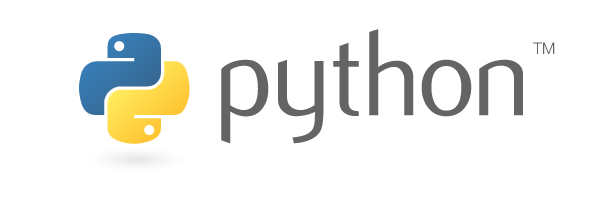SSL Hell, Population:
Your Team
Python 3.13 flipped on VERIFY_X509_STRICT by default, which sounds great until your email stops sending and you get this useless error: `[SSL:
CERTIFICATE_VERIFY_FAILED] certificate verify failed: Basic Constraints of CA cert not marked critical`.
I spent an entire Tuesday debugging why our staging environment couldn't send emails after I upgraded one fucking container to Python 3.13 for "testing." Turns out SendGrid's certificates don't mark the "Basic Constraints" field as critical, which Python 3.13 suddenly gives a shit about.
The fix is literally one line but took me 6 hours of angry Googling and three different Stack Overflow threads to find.
Here's what else breaks that the official migration guide doesn't mention:
Containers Start OOMKilling
Your 512MB containers?
They started OOMKilling within 20 minutes of the Python 3.13 rollout. I spent a weekend digging through container logs that just said "Killed" with zero fucking explanation. Python 3.13 eats more RAM
- we went from 512MB to 650MB on our API containers, then had to bump to 800MB after the recommendation service started dying under load. I still don't know why it needs so much more memory.
SSL_CERT_FILE Stops Working
Python 3.13 ignores the SSL_CERT_FILE environment variable now.
If your deploy scripts set that, they'll fail silently and you'll wonder why certificates aren't loading.
How to Actually Fix SSL Shit
Don't just disable SSL verification like a savage. Here's what works:
import ssl
context = ssl.create_default_context()
context.verify_flags &= ~ssl.
VERIFY_X509_STRICT
This turns off the new strict checking without making everything insecure. Took me 3 days of debugging and a very patient security engineer to find this buried in SO thread #79358216
- answer #3, naturally.
Dependencies That Look Fine Until They Aren't
Even packages marked as "compatible" with free-threading have weird issues. Pillow crashes under load and psycopg2 gets race conditions that only show up with multiple threads running.
The compatibility tracker helps, but trust nothing until you load test it.
Memory Limits Are Wrong Now
Test your containers with more RAM before you deploy.
The official Python images don't account for the memory increase:
FROM python:
3.13-slim
# Maybe bump memory limits?
Test first
COPY corporate-ca.pem /etc/ssl/certs/
ENV REQUESTS_CA_BUNDLE=/etc/ssl/certs/corporate-ca.pem
Timeline Reality Check
SSL debugging took me 3 weeks across 4 different services. Memory problems decided to surface right before our Q4 launch. Plan for 3-4 months unless your app just serves static files.
Management asked for a 2-week timeline in our planning meeting. I literally laughed. They were not amused. Every migration shortcut creates 6 months of 3am debugging sessions later.
Your CI Will Probably Break Too
Your GitHub Actions (or whatever you use) will need tweaks. Memory monitoring helps catch issues early:
- name:
Test SSL config
run: python -c \"import ssl; print('SSL:', ssl.create_default_context().verify_flags)\"
- name:
Run tests
run: pytest --tb=short
What Actually Breaks First
SSL certificate validation will fuck you over.
Your corporate proxy that's worked for years? Python 3.13 doesn't like it anymore. You'll get CERTIFICATE_VERIFY_FAILED and spend half a day figuring out it's the firewall.
Memory usage seems to go up. Dynamic imports sometimes break with weird import errors. Even with the GIL on, random shit surfaces that was hidden before.
The error messages are better now, which helps, but SSL debugging still sucks.
Don't Test in a Clean Environment
Your testing environment needs to be as fucked up as production. Use your actual corporate certificates, proxy settings, and all the network bullshit you deal with daily:
FROM python:
3.13-slim
RUN apt-get update && apt-get install -y gcc libssl-dev
COPY corporate-ca-bundle.pem /etc/ssl/certs/
ENV REQUESTS_CA_BUNDLE=/etc/ssl/certs/corporate-ca-bundle.pem
Test with real data and actual auth systems.
Clean environments won't catch the SSL certificate issues that break real deployments.
Start With Dev Environments
Let developers play with Python 3.13 locally first. They'll find the weird issues you missed:
# Basic migration script
python3.13 -m venv venv-py313
source venv-py313/bin/activate
pip install -r requirements/dev.txt
pytest tests/smoke/
Give them time to learn the new REPL and understand SSL changes.
Test Both Versions Side By Side
Run 3.12 and 3.13 tests in parallel to catch differences:
[tox]
envlist = py312, py313
[testenv:py313]
basepython = python3.13
setenv = PYTHON_GIL=1
Focus on integration tests. Unit tests usually pass fine
- it's the network and SSL stuff that breaks.
Why This Takes So Long
Management wants this done in 2 weeks. SSL bugs take days to debug. Memory issues show up randomly. Dependencies break in unexpected ways.
Teams that skip testing end up fixing production issues at 3am under pressure. Take the time to do it right.
